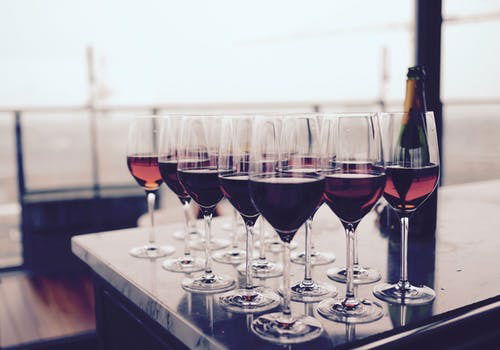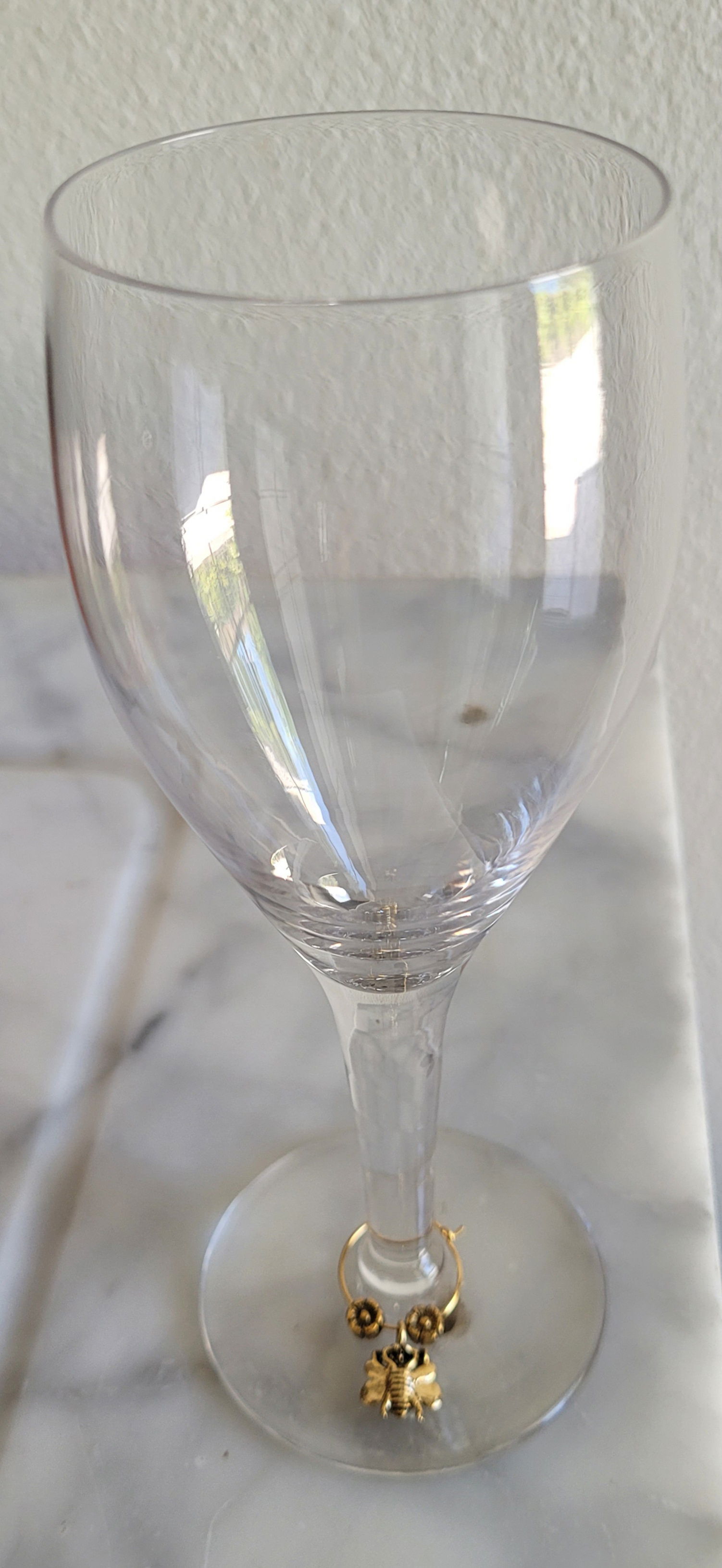How to Organize a Wine Tasting Party
You are hesitant about organizing a wine tasting. I mean, wine tastings are so complicated, right? Well, I have to admit that wine tastings for the profession are … and that is exactly what you are not doing so lighten up and get ready for some fun!
Besides, parties by their very nature are meant to be fun and effortless. A little preparation beforehand, and the night of the party, everyone should have a blast and that includes the host!
Here is a plan that will make it successful and everything you hoped it would be. There is nothing worse than to have it turn out badly. It is a wine party and should be above all enjoyable. After all, you probably put in several hours before the party and a wine tasting has all the expenses of a regular party with the additional factor of the logistics and cost of the wine.
You have to think of the theme of the tasting, choosing the wines, buying the wine which might involve visiting several stores, arranging for the food or snacks (not necessarily cooking), getting out the invitations (it could be as simple as an email list), arranging glassware, providing tasting sheets or notes, finding a venue etc. I have a news announcement: you have to do most of this for any party. You can make it as simple or complicated as you want.

Fun vs Education
However, rest assured, that is why you are reading this. Take advantage of my years of experience to make your plan go effortlessly. Let's make this event one that your attendees will rave about. If you just keep in mind that every tasting hinges around two concepts, entertainment (social) and education. However much the attendees expect of one or the other is the first major decision you have to make at the outset..
Let me give an example. I live on a street with sociable neighbors and they decided, spontaneously, to have a wine tasting in a driveway due to fear of catching something.. They are not thinking of learning a ton and expect mostly fun. They asked me to help out because they, I assume, realized that it has to have some structure. It was very simple to arrange on the spur of the moment. It it proved to be, for me, the most enjoyable time despite all these years under my belt in the wine business!
Spontaneous Driveway Wine Tasting During The Pandemic
Everyone (12 people involved in this case) brings at least one bottle. This is premised on a bottle holds 25.4 oz so everyone gets one tasting sample. Tasting pour is 1.5- 2 oz. Every house provides its own glasses (one per person) for tasting. Each house provides its own water for rinsing glasses between wines. No embarrassment for spitting out the wine on the lawn. Each house will eat before they come. Every house brings its own gloves for handling the wine. Each house will socially distance. Whites will be tasted before reds. Bread and mild cheese was also provided as a palate cleanser. Voila, we have an effortless wine tasting that was as spontaneous as arranging a flash mob.
Granted I had to put a fun element into it by bringing a brown paper bag and asking them to guess whether the wine I brought was from France or California. Not asking too much because they expect fun, but hopefully just a little conversation starter which it was.
Purpose of the tasting
All tastings, if you are not in the trade, focus around fun and/or education. At one extreme they are like a party atmosphere and at the other, they are like teaching seminars. The most serious I have ever participated in was when I worked professionally in Bordeaux. I am not here discussing this sort of tasting. Most however are like the other day in my driveway and, by the way, a great time was had by all. They want to do it again which is a sign of having a blast.
What we are going to do here is to keep the fun element clearly in focus, present ideas and a “how to” for a beginners wine tasting. Maybe in a later post I will talk further about an intermediate wine tasting and also an advanced wine tasting. Hopefully you all will learn something and have a lot of fun at the same time. As you would expect, as we proceed from the beginner to the advanced, we tend to make the learning experience be more the focus and the fun part less the focus.
Sample Wine Tasting
An example of a beginner tasting might be a simple generic appellation based, say California versus France. For an intermediate level it might assume Napa Cabernet Sauvignon versus Bordeaux Cabernet Sauvignons. For an advanced you might compare and contrast the wines of a fine Napa Valley estate versus a fine Bordeaux chateau.
The level of discussion of the wine will necessarily be more complicated and the more expensive the wines the higher and pricier you go. And the higher you go, the more you tend to towards education and the less toward fun as the goal. Some starter wine lingo is in my blog.
Beginner Wine Tasting
Preparation :
Glassware Make some provision that does not involve using a glass per wine. If you use a glass per wine per person, you will be washing glasses long into the night after the tasting. Save that kind of effort for the professionals.
I find, in today's times, people feel more comfortable using their own wine glass which they can adorn with a wine "charm" to mark it as theirs. These are extremely cheap on the net and are washable and reusable. A wine glass magic marker can also serve the purpose of not accidentally grabbing the wrong glass. If circumstances dictate you must use plastic, at least use quality plastic.


Glass with wine charm
Written Material Next ask the question, Do you want to distribute any kind of written material about the wine? That is optional and I would suggest not if this is your first tasting.
Tasting Notes Next some kind of simple tasting notes, one sheet if, and only if you feel it appropriate. You would not want to use something as intense as Rick's Value Score. Again if this is your first time, I would think it not wise.
Name Badges If the attendees know each other, no name badges. If they don't, I will leave it up to you. Maybe just the first name will do?
Food Also, I will leave the food (if any) up to you. You know what of party you are throwing. Maybe it is after dinner and you will have finger snacks; maybe you arranged something where everyone brings an entrée. I just want to say be sure that people are tasting wine on a full stomach. I will add that you minimally should have bread/crackers with some neutral tasting cheese as a "palate cleanser". Cut the cheese up and serve it with bread/crackers or just toothpicks. You don't want people drinking on an empty stomach. It is bad form with any party.
Water Provide your tasters with water so that they can rinse their glasses between wines and keep themselves hydrated. (Dehydration leads to headaches the next day and you wouldn't want your guests to remember you with a headache).
Wine Limiter You might fine helpful to use a device that limits the size of pours.

Possible Themes for A Beginner Wine Tasting
To get the thought process started, if you are searching for ideas, here are some possible basic themes around which you could organize your party. I give a short list of 10 but can go in whatever direction you want. Only you know who is invited and what might please them.
- Wines from one country like France or major appellation like California. (You can look at my main website for differences between appellation based versus varietal based wines)
- California wines versus French Wines … You might have similarly priced cabernet sauvignon or maybe chardonnays. The idea is the lush, fruity, bold California style vs the more restrained, lighter, elegant French style. (Again, you may reference my web site on the differences between appellation based wines and varietal base wines.)
- The same idea as Numbers 1 and 2 but now you compare and contrast different wines or varietals within the same broad appellations. You might try California chardonnays or slightly more specific chardonnays from broad regions like the North Coast which is north of San Francisco -- Sonoma, Napa, Mendocino, Lake, etc
- You might choose oaked vs unoaked styles of chardonnays.
- You might choose wines within a price point. Wines that cost $12 to $15 dollars, for example, are not too complicated to start with.
- Wines of one producer is an interesting theme.
- A selection of wines wines with a particular aroma as an idea (link to wine aromas blog)
- A comparison of organic versus nonorganic wines
- Choose a category of sweetness as an organizing theme.
- Sparkling wine as a category.
Once started along this path, you can see the possibilities are endless and easily adapted to your needs and audience. As promised earlier, I also give a Level One Wine Tasting Form in case you need one.
So there you have it: all the tools necessary to make for a successful wine tasting party. Enjoy yourself, I am sure your guests will!